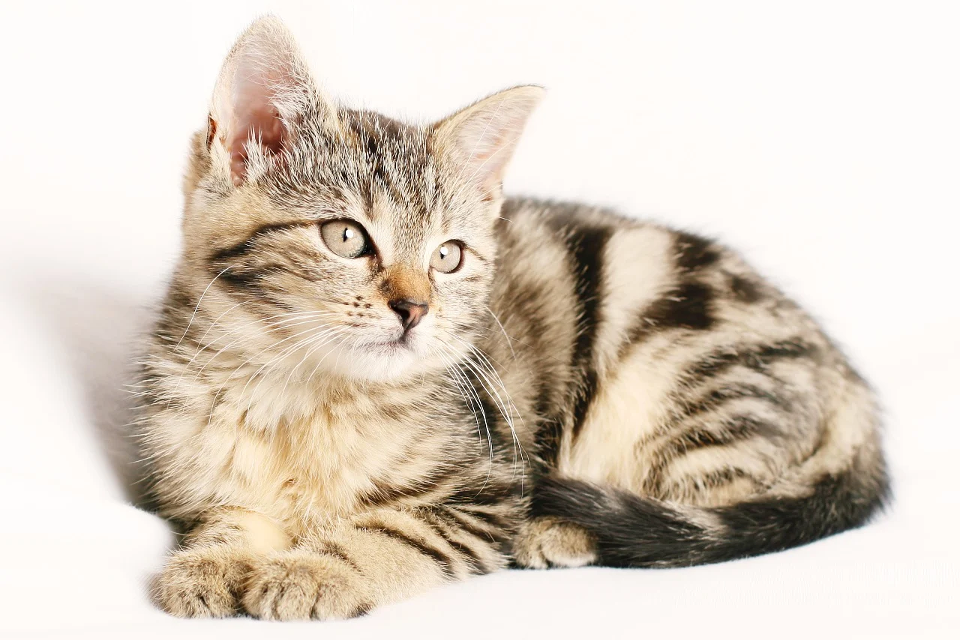Through their quirks and cuteness, cats have had no trouble stealing their way into the hearts of people the world over. For thousands of years, cats have entranced us with their meme-worthy antics, mischievous personalities, and adorable appearance. But for all their popularity, there’s more to cats than meets the eye. If you’re a cat lover, you won’t be surprised to find these cuddly companions are more complicated than the average cat video connoisseur may thing. Read on for some amazing facts about cats that are sure to make you appreciate these furry creatures even more.
9 Fantastic Cat Facts
1. House cats share almost 96% of their DNA with tigers.
Anyone who’s ever owned a cat knows that despite being cute and cuddly, those claws and teeth can hurt! As it turns out, despite their small stature, cats share a whopping 95.6% of their genes with the biggest feline predator in the world: tigers. (source)
2. Cats spend 70% of their lives sleeping.
Perhaps the least surprising fact about cats how much they love curling up in a sunbeam and catching a good snooze. But did you know that cats actually spend up to 16 hours a day sleeping? Cats are crepuscular, meaning they are most active during dusk and dawn. Most of the mid-day and nighttime, cats can usually be found napping. (source)
3. Cats can run up to 30 miles per hour.
Despite their love for sleep, cats are surprisingly fast. While they aren’t the best long-distance runners, their supple spines and muscular back legs allow them to reach impressive speeds for about a minute before needing a break.
Much like their genetic cousin, the Cheetah, cats use these sprints to hunt agile and quick prey like mice and birds. Turns out all those naps provide cats an energy reserve that they can tap into whenever they need to hunt (or outrun the neighbor’s stray dog). While sprinting, some domestic felines are able to hit up to 30 MPH. (source)
4. A cat has been to space.
As far as fun cat facts go, the most impressive feline feat was probably that of Felicette, the only cat to have ever gone to space. The feline cosmonaut was part of a 1963 French mission, in which Felicette embarked on a 15-minute suborbital mission. Due to the dangerous nature of the assignment, the space-faring feline was the only one out of 14 potential candidates to make the cut. Though her victory was almost lost to time, a bronze statue honoring her victory has been erected at France’s International Space University. (source)
5. Cats can be right-handed, left-handed, or ambidextrous.
Much like humans, research has now proven that cats show preference to either their left or right paws. Their dominant paws are largely dependent on their sex. Male cats tend use their left paws more and female cats mostly use their right paws. Interestingly, the findings mirror much of what we know about how humans use their hands, with cats easily switching between paws for less dexterous tasks and using their preferred paw for more precise tasks. (source)
6. Cats can spend up to half of their day grooming.
Cats have a reputation for being one of the cleanest pets. It’s not wonder, considering the fact that cats can spend anywhere from 30-50% of their day grooming!
Cats usually groom by licking themselves clean, however, it’s actually possible for cats to lick themselves too much. Sometimes, if a cat is stressed, hurt, itchy, or bored they can overdo it. Usually, this will present as a bald spot or sore and should be addressed with a veterinary visit. (source)
7. Cats can’t taste sweetness.
Among mammals, cats are the only known animal incapable of enjoying a sweet treat. Salty, savory, bitter, and sour flavors are detectable, but felines lack the receptors that allow them to detect sweetness in their foods.
Much like their big cat relatives, researchers believe this is due to their diets, which are primarily meat-based. Due to their inability to digest carbs, it’s thought cats had no reason to develop a taste for fruits, sugar, or other starches. (source)
8. Cats mark their territory just like dogs.
Some owners may be familiar with the problematic behavior known as spraying. While this is one means by which some naughty cats mark territory, it’s not the only way!
Have you ever had a cat rub up against you? While this might seem like a sweet bid for affection (and it often is) the secondary purpose to this charming behavior is to rub their scent glands all over your legs!
Cats often do this with objects around their homes as a way to mark them as safe or send a message to other cats, both friends and foes alike. Of course,
Cats possess scent glands on their faces, paws, tales and rears that allow them to transmit pheromones to communicate with other animals. In addition to rubbing, cats also claw at furniture, rugs, and scratch posts as a way to mark their territory with their paws. (source)
9. Cats have been kept as pets for over 9000 years.
Though researchers have yet to identify exactly when cats were domesticated by humans, we have found remains of a wild cat who was buried by humans 9500 years ago in Cyprus. Famously, cats were a large part of Ancient Egyptian culture, with art depicting domestic cats going back as far as 4 millennia. Some evidence suggests that domestic cats may have existed as far back as 5500 years ago in China. (source)
Have any interesting facts to share? Share them in the comments below!
Related:




